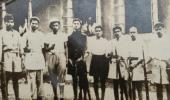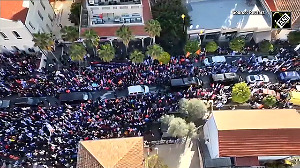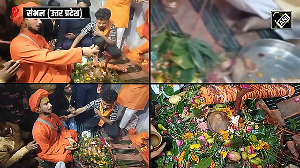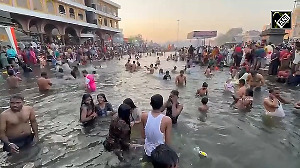Chimaji Appaji remains one of the foremost military generals of the Maratha Empire who inflicted a crushing defeat on the Portuguese.

The Marathas under Chimaji Appa, the younger brother of Peshwa Bajirao I, defeated the Portuguese in the Battle of Vasai, February 17, 1739.
Peshwa Bajirao's military vision can be rightly compared to immortal cavalry leaders Napoleon Bonaparte and Frederick the Great, according to retired Major General Shashikant Pitre's book Bajirao: A Soldier's General.
'During the short span of twenty years of his military career, he fought about forty battles and remained unconquered without losing even one. When he was called to Peshwaship in 1720, the Maratha state was in a perilous condition. At his death, he left the Maratha nation strong and united, its friendship solicited by Rajputs, the Bundelas and its alliance courted by the Mughal rulers,' writes General Pitre.
The Portuguese had taken control of Vasai, formerly Bassein from the Sultan of Gujarat through the Treaty of Bassein in 1534.
The treaty not only gave the Portuguese Vasai, but also the seven islands of Bombay.
The Portuguese built the Vasai fort in 1536. They had a formidable navy which made the fort an impregnable defence. The fort was surrounded on three sides by the Arabian sea and had only one land access.
'The Portuguese were known to be fierce seafarers and they had a large fleet defending the fort from the seaside, thus making this fort completely invincible. The fort was also used as the official residence of the Portuguese governor when he made his visit to the northern region,' writes Pascal Lopes in a blog on the Indian Numismatic, Historical and Cultural Research Foundation Web site [external link].
The Marathas laid siege on the fort with foot soldiers, horses, camels and men equipped with laying mines.
The Maratha army blasted the walls to create passages and repeatedly attacked the fort. There was a tough fight back from the Portuguese.
The Maratha general was assisted by commanders Ranojirao Shinde and Malharrao Holkar who later established the Holkar and Scindia dynasties in Gwalior and Indore.

The Portuguese surrendered and vacated the fort after residing and thriving there for nearly 200 years.
The fort has an entire town within its walls with churches, hospitals, learning institutions and other administrative and community places, according to Pascal Lopes cited above.
Chimaji Appa and the soldiers carried bells from the churches inside the fort as war memorabilia and installed it in different temples in Maharashtra which exist to this day.

Chimaji remains one of the foremost military generals of the Maratha Empire who inflicted a crushing defeat on the Portuguese.
The British went on to gain control of Vasai in 1780.
The ruins of the old fort are now under the Archeological Survey of India. The facades of 17th century Portuguese churches and several watch towers are still standing strong. Several famous Hindi films like Josh, Khamoshi have been shot at the fort. Coldplay shot parts of their song Hymn for the Weekend at Vasai Fort.
Feature Presentation: Aslam Hunani/Rediff.com










 © 2025
© 2025